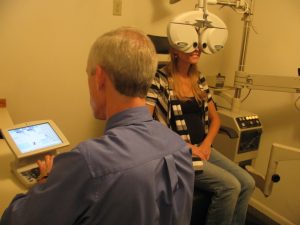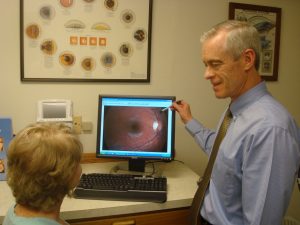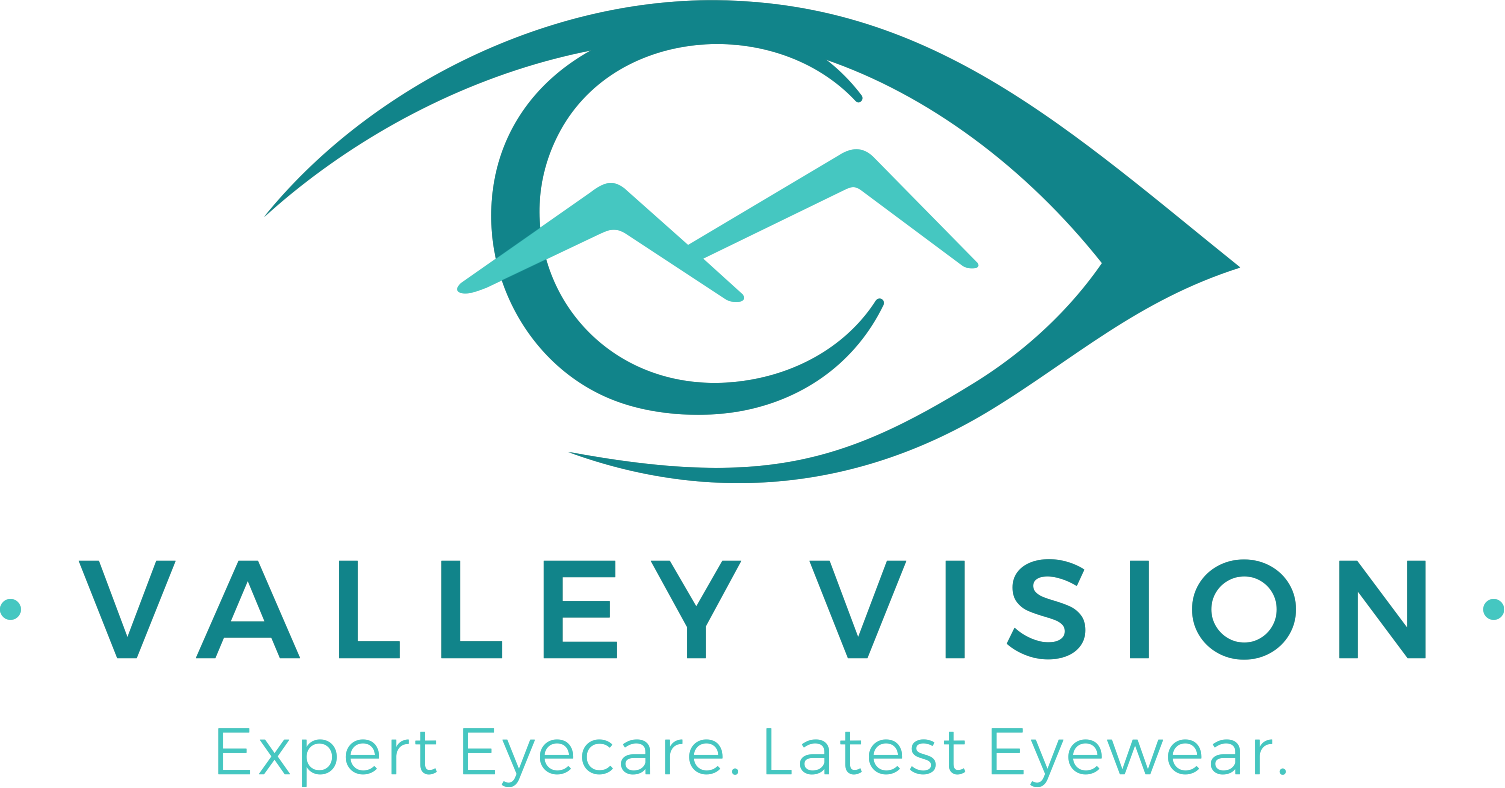
Your examination is designed to detect a wide range of problems affecting visual function, such as blurred vision, eye tracking and eye muscle deficiencies. At Valley Vision Clinic computerized examination instruments are used to supplement rather than replace personalized care.
Your evaluation includes a thorough eye health exam designed to detect eye diseases such as glaucoma, cataracts, dry eye disorders, macular degeneration, as well as the ocular effects of systemic health problems such as diabetes and hypertension. You may feel unfamiliar with the testing done at these exams, we would like to ease your worry by explaining some of the exams and tests you will experience when you visit us.
Here are some things you can expect at your comprehensive exam:
–Autorefractor: This is a machine you will meet in the “pre-test” room at the beginning of your exam. You will place your chin on the chin rest and focus on an object in your vision. The autorefractor tests one eye at a time. An autorefractor, like a manual refraction, determines the lens power required to accurately focus light on your retina. They are very accurate and provide the doctor with a “base-line” of your prescription needs, which also saves time!
–The Glaucoma Test: Testing for glaucoma begins by measuring the pressure inside your eyes. This test is performed on every patient we see. The technician will test this using a handheld device. She places the rest on your forehead and focuses the red circle of light around your pupil. Your job is to open your eye as wide as possible and stare straight ahead. When the test begins you will see the red light turn green, you may then feel a “flutter” on your eye, and some patients feel nothing at all!
–Optos Screening: This test allows us to capture a 80* image of your retina and optic nerve. It is a fast and easy test. You will be asked to place your chin on a chin rest and push your forehead into the upper rest. Inside you will see a red “target” light to focus on. The technician will then move the camera for an optimal angle, a bright flash of light will move across your vision… and that’s it! We will capture an image of the left eye and the test is finished.
–Visual Acuity Test: This checks the “sharpness” of your vision. These are usually tested by using a projected eye chart.
-Ocular Motility Testing (eye movements): This is performed to see how well your eyes can track a moving object. You may be asked to track a light while holding your head still.
–Retinoscopy: In this test the lights will be dimmed and you will be asked to focus on one object (usually a letter chart.) The doctor will then shine light in your eyes and flip lenses in a machine, based on the reflection of your eyes in the lens’ they can determine your need for an eyeglass prescription.
Refraction: This test tells the doctor of your exact eye prescription. A phoropter will be placed in front of your eyes, and you will be shown a series of lens options. You will be asked which of the lens options is clearer (1 or 2, 2 or 3, etc). The phoropter will determine your vision needs.
–Slit-Lamp Exam: A slit-lamp is a binocular microscope that the doctor uses to examine the structure of your eye. It looks like a giant microscope from your high school biology class! You have the easy job during this, you place your chin on the rest and push your forehead into a head rest… the doctor can then examine your eyelids, cornea, iris, lens… even the back of your eye like your retina and optic nerve by using a hand-held lens. A wide variety of eye related diseases and conditions can be caught and determined with this exam, so it is a very important part of your exam!


The American Optometric Association recommends that all people should have a comprehensive eye examination every one to two years depending on one’s particular needs, as you can see these exams are about much more than finding out what strength of lenses to put into your frames!
If you have any questions about our services, please contact us today at (970) 945-6011.
